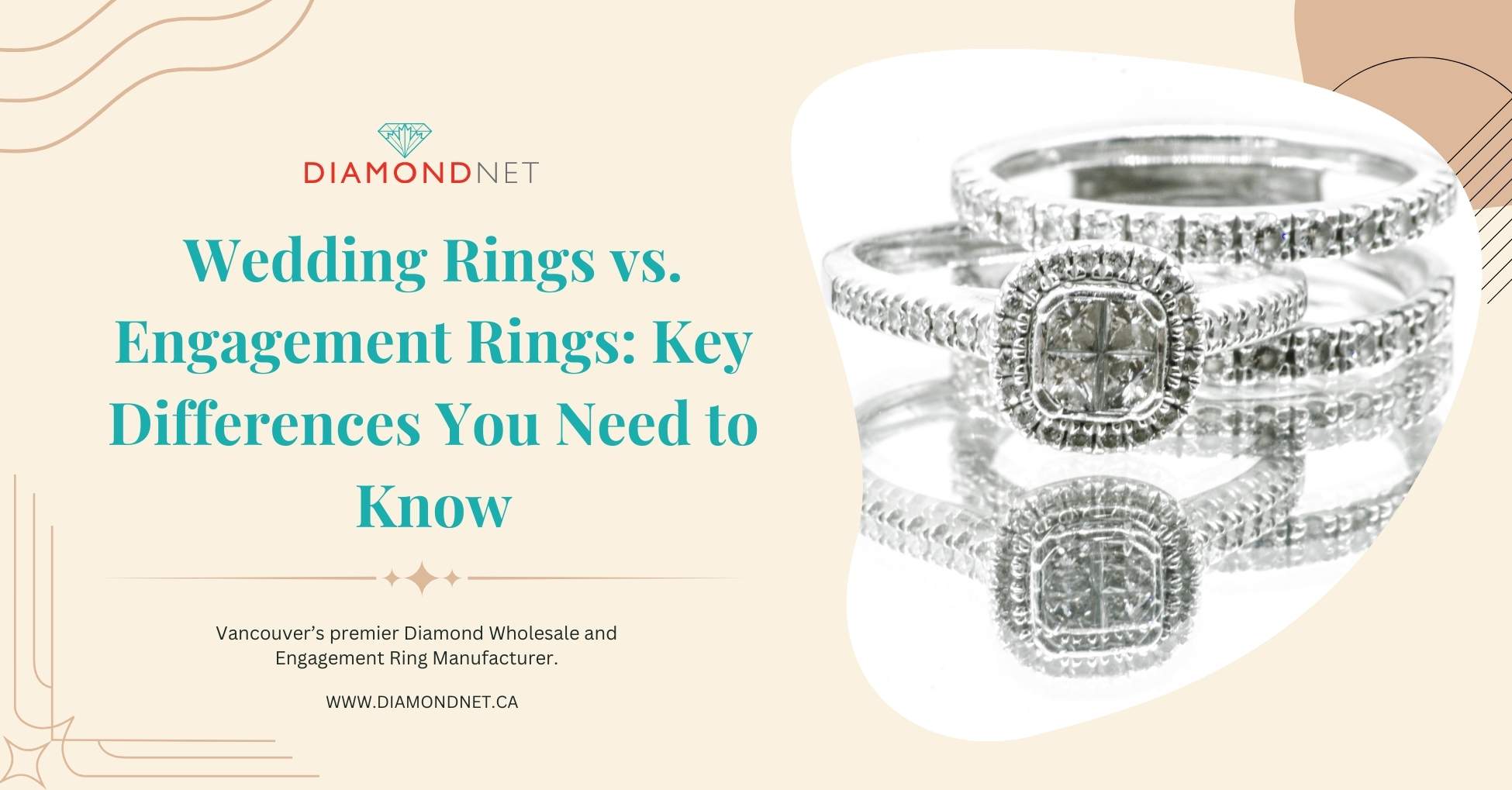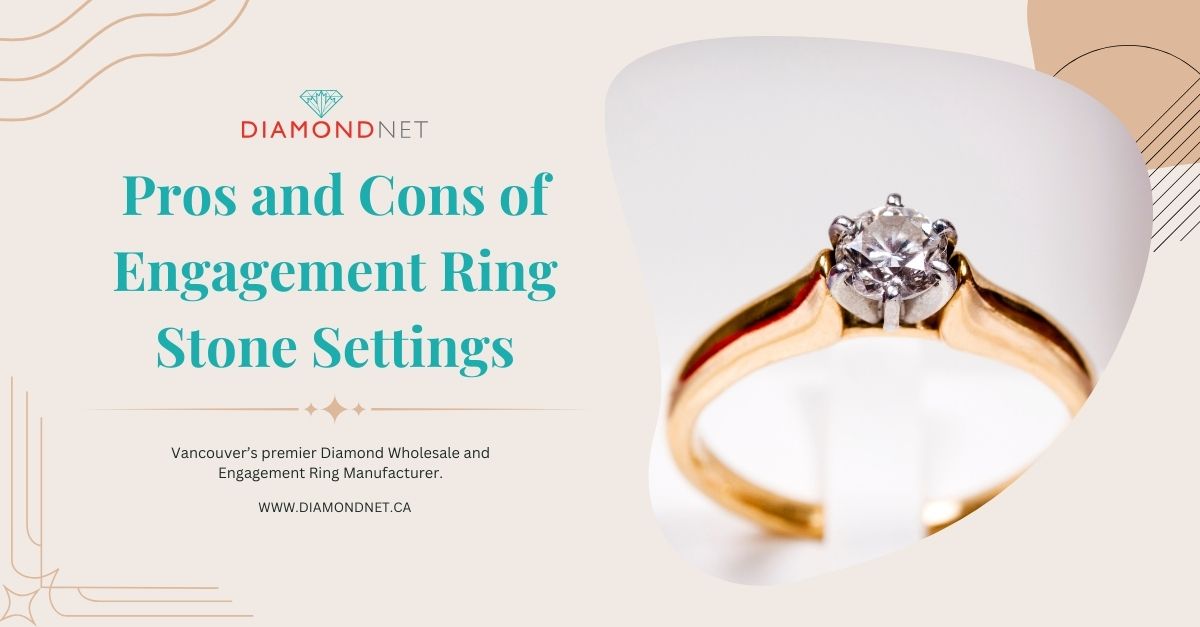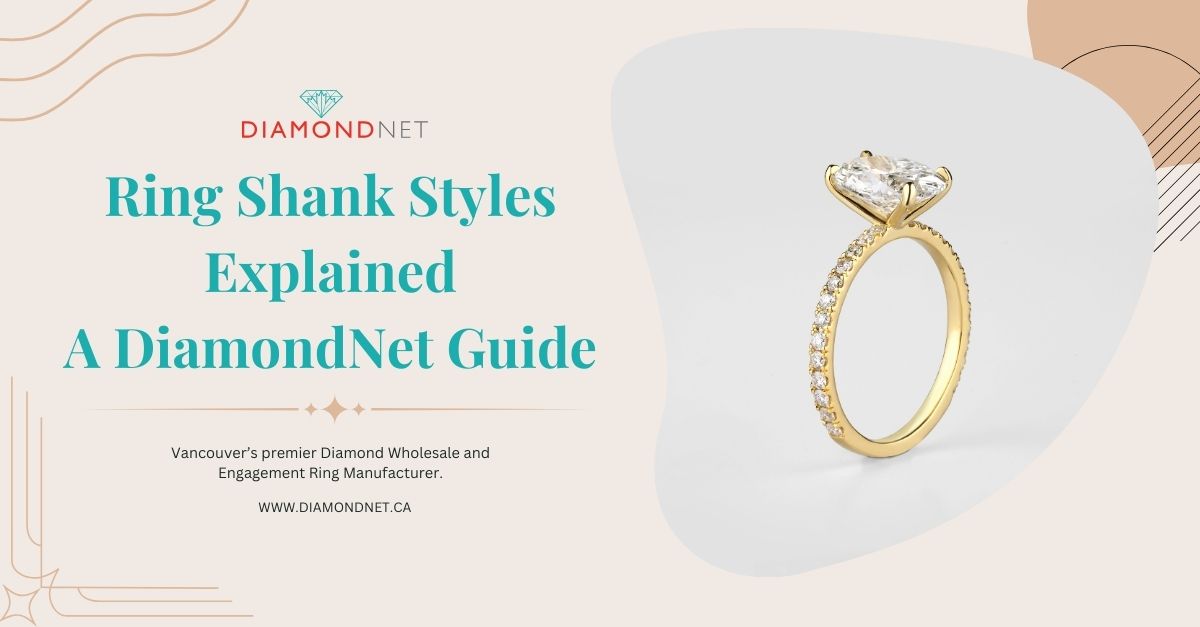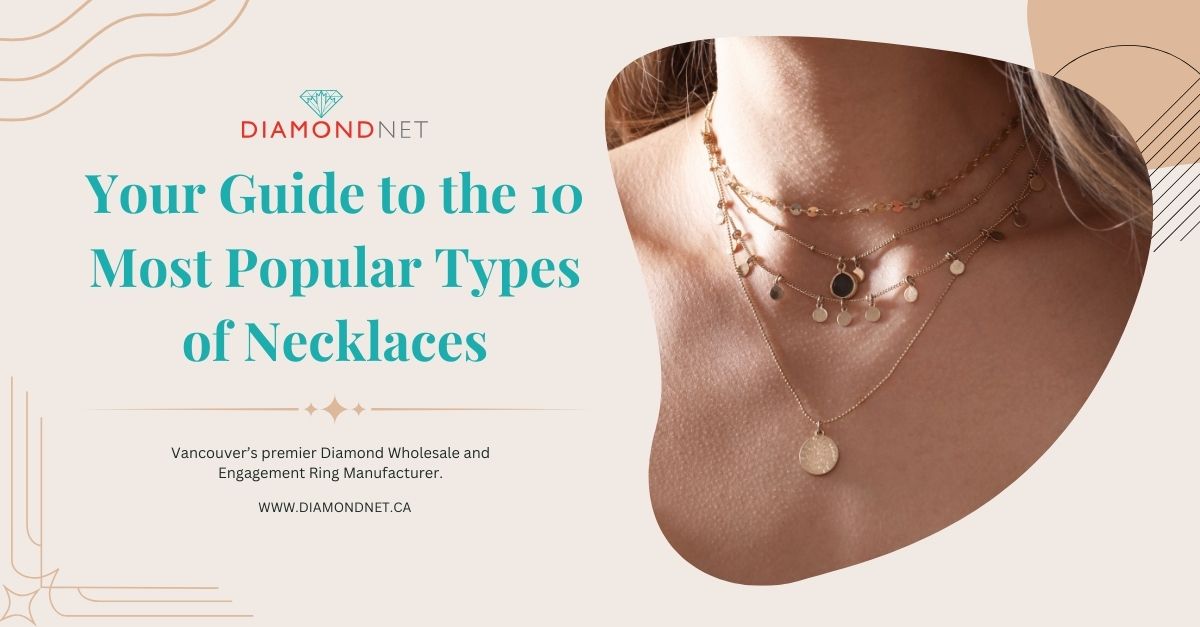Choosing the perfect rings for your marriage journey can feel overwhelming, especially if you’re a first-time buyer. Understanding the differences between wedding and engagement rings is key to making the right choice. This guide highlights the key distinctions while offering insights into cultural traditions and modern trends.
Engagement Ring and Wedding Ring Explained
While both rings symbolize love and commitment, they serve different purposes and feature unique designs. Below, we’ll explore the role of each ring in a couple’s journey.
What is an engagement ring?
Traditionally given during a proposal, an engagement ring symbolizes a promise of marriage. It typically features a prominent gemstone—often a diamond—designed in styles like solitaires, halos, or three-stone settings. The engagement ring is usually worn on the fourth finger of the left hand.
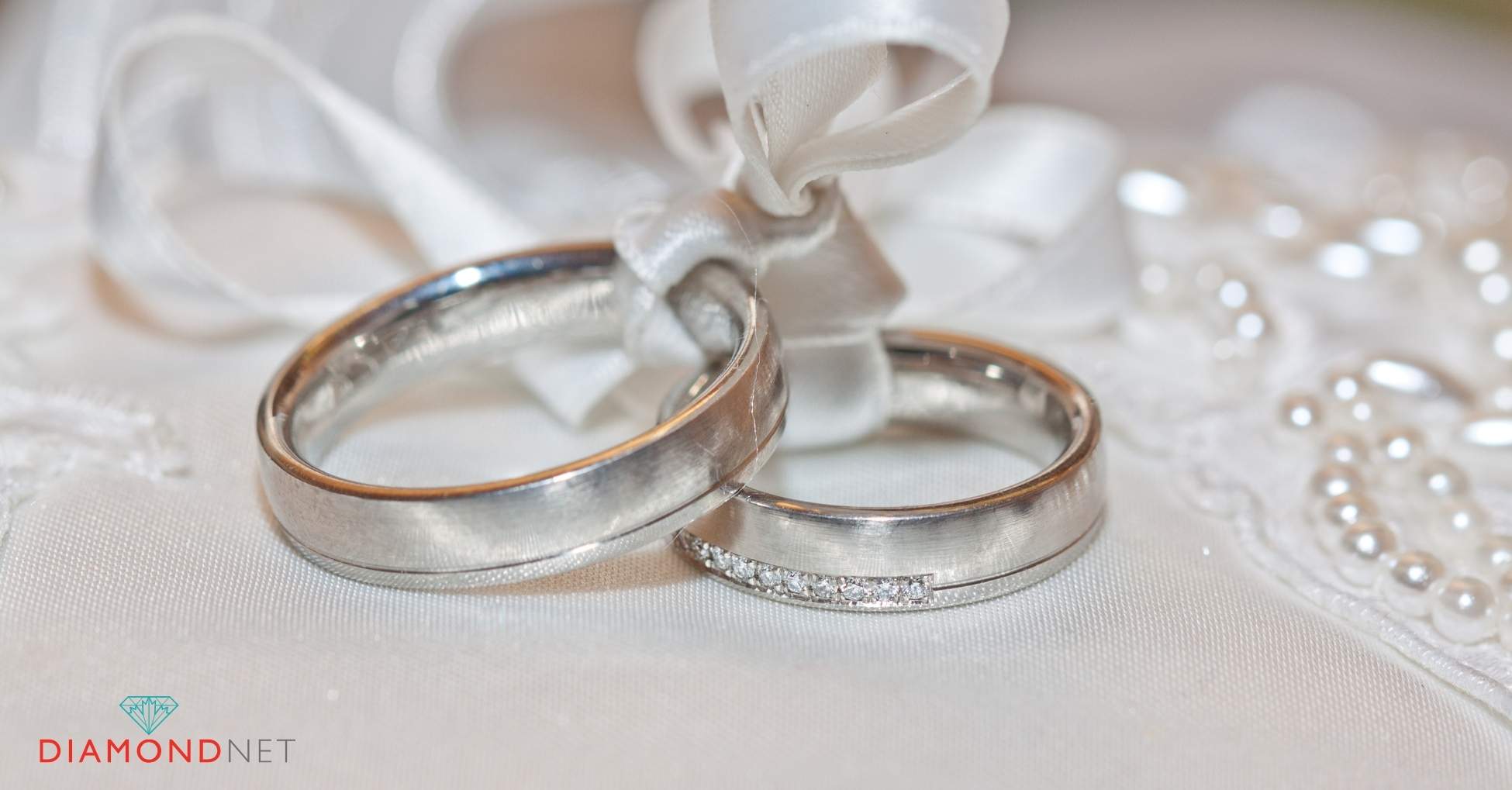
Can an engagement ring be used as a wedding ring?
Yes, some couples choose to use the engagement ring as both their engagement and wedding ring. This is particularly common with simple or versatile designs and is a practical option for those who prefer fewer rings.
What is a wedding ring?
A wedding ring, or wedding band, is exchanged during the wedding ceremony. It symbolizes the official union of marriage and is often a simpler band made of metal or adorned with subtle decorations like engravings or small gemstones. It’s worn on the same finger as the engagement ring.
Which hand do you wear a wedding ring on?
In many Western cultures, wedding rings are worn on the left hand’s ring finger. However, in some European countries, they’re worn on the right hand. Ultimately, the choice of which hand to wear the wedding ring on depends on personal preference and cultural traditions.
Differences Between Engagement Rings and Wedding Rings
Choosing the right rings to symbolize your love can be overwhelming, especially if you’re unsure about the distinctions between engagement and wedding rings. These rings serve unique purposes, have varying designs, and follow different traditions.
Let’s dive deeper into these key differences:
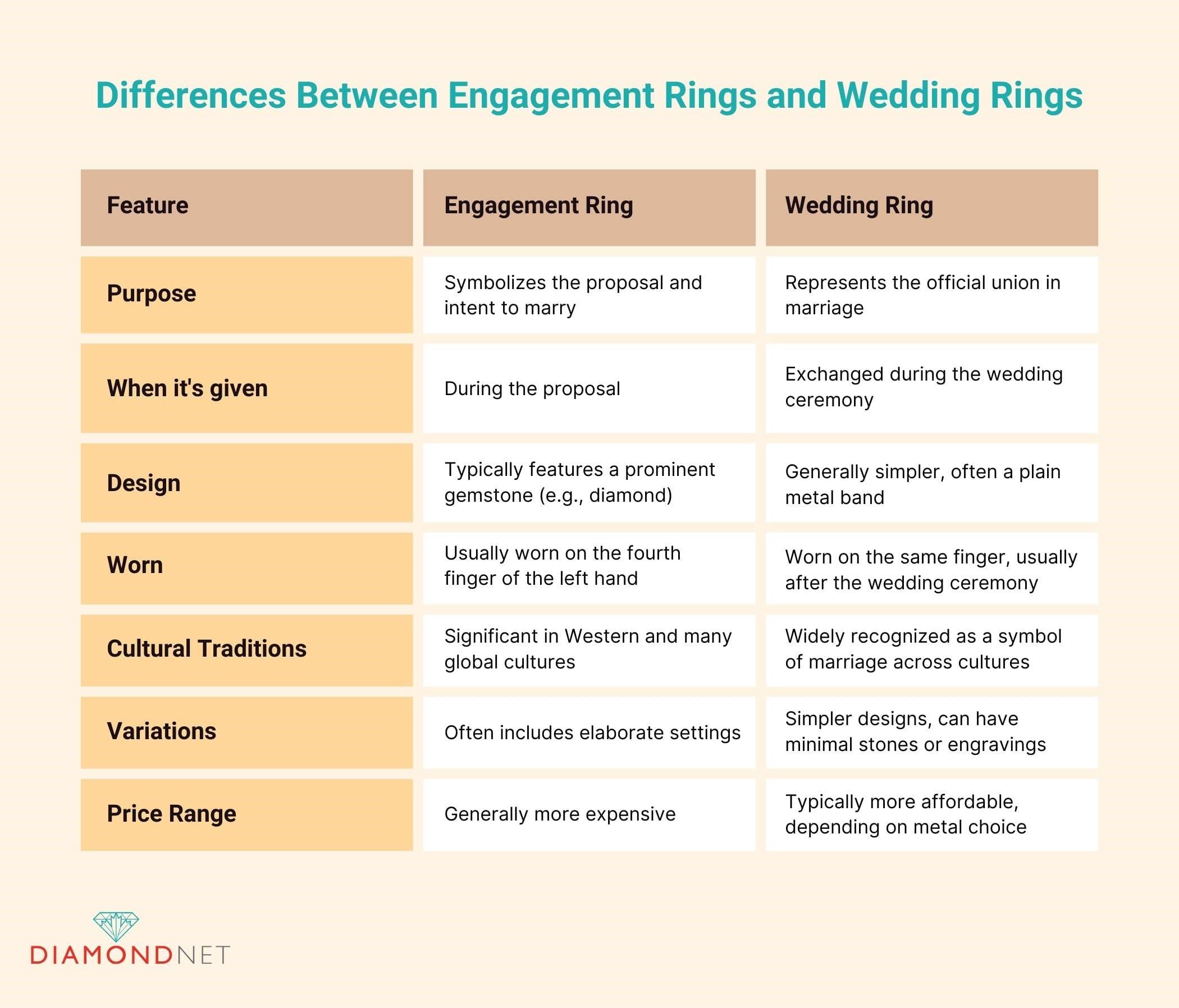
Choosing the right rings to symbolize your love can be overwhelming, especially when you need clarification on the distinctions between engagement and wedding rings. These rings serve different purposes, have varying designs, and follow different traditions. Let’s explore all the key differences.
Purpose
- Engagement Ring: Represents a commitment to marriage and is given during a proposal. It marks the promise to marry and is often presented as a surprise to the recipient.
- Wedding Ring: Exchanged during the wedding ceremony, it symbolizes the couple’s formal union and lifelong commitment to each other.
Timing
- Engagement Ring: Given before the wedding and typically worn on the left hand’s fourth finger (the “ring finger”). It is often worn alone until the wedding day.
- Wedding Ring: Given during the wedding ceremony and worn alongside the engagement ring afterward.
Design Differences
- Engagement Ring: Usually more elaborate and eye-catching, featuring a prominent diamond or gemstone. Common styles include solitaires (a single diamond), halos (surrounded by smaller diamonds), or three-stone designs. The focus is on creating a show-stopping piece.
- Wedding Ring: Simpler in design, often made of plain metal like gold, platinum, or silver. Some may include small diamonds or engravings, prioritizing durability and timeless elegance.
Wearing Order
- Engagement Ring: Traditionally worn first on the left hand’s ring finger. During the wedding ceremony, it may be temporarily moved to the right hand to make space for the wedding ring.
- Wedding Ring: Placed first on the left hand’s ring finger during the wedding ceremony, with the engagement ring worn above it. Some couples choose to solder the two rings together, while others wear them separately.
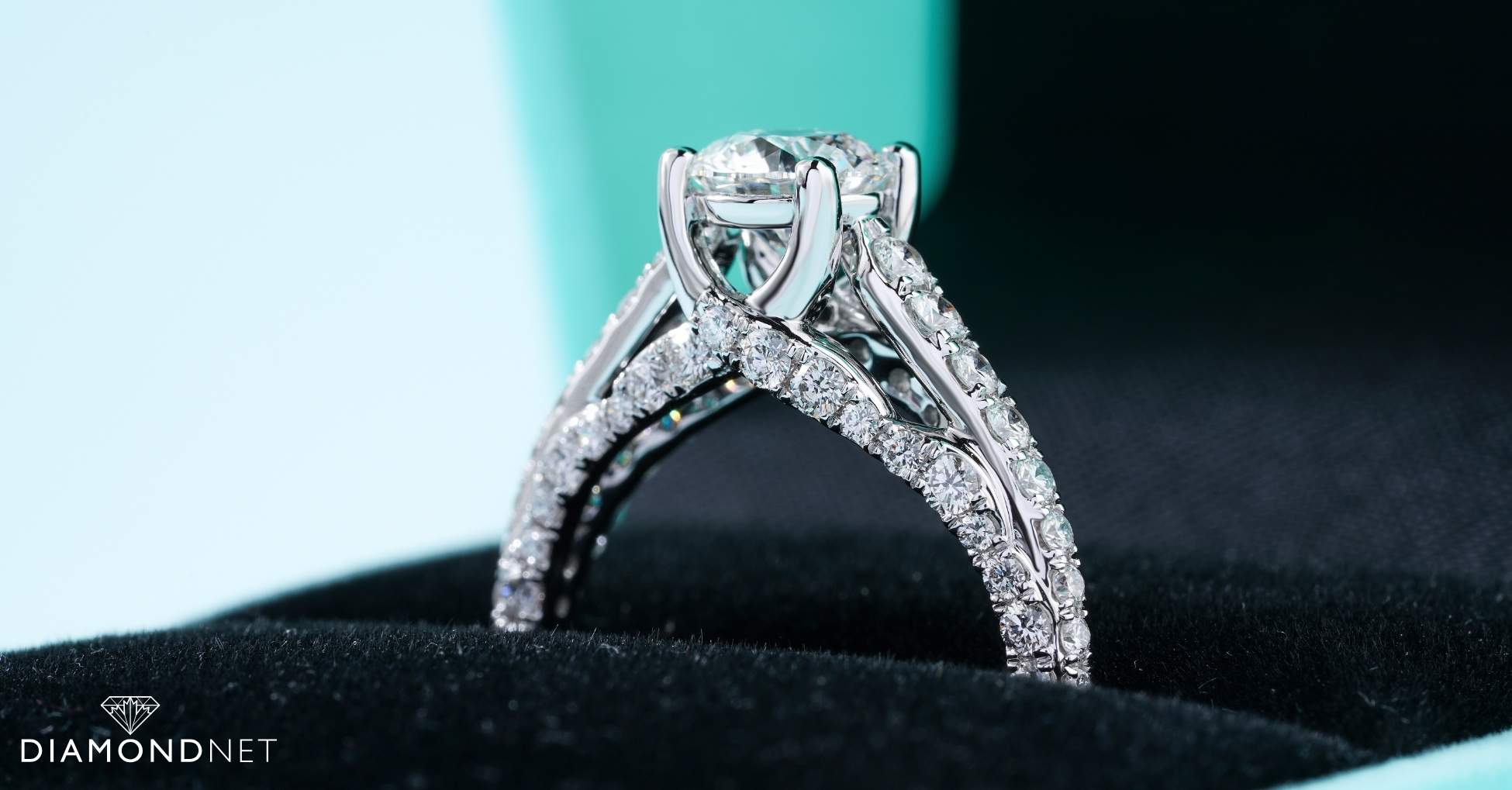
Cost
- Engagement Ring: Typically more expensive due to the inclusion of gemstones like diamonds, which are often larger and more intricate in design.
- Wedding Ring: Generally more affordable, especially if it’s a simpler metal band without additional stones.
Style Customization
- Engagement Rings: Offer extensive customization options, including choice of gemstone, setting, and design. Custom-designed engagement rings are particularly popular.
- Wedding Rings: While customizable, wedding rings typically have fewer design options and lean toward simpler styles for daily wear.
Cultural and Regional Traditions
Cultural and regional customs influence how engagement and wedding rings are worn. In many Western cultures, both rings are worn on the left hand. In some European countries, the right hand is preferred. Cultural norms may also affect ring design, such as in Jewish tradition, where the wedding ring must be a plain metal band.
Engagement Ring Traditions
Engagement ring customs differ across cultures. In some regions, only a wedding ring is exchanged, with no engagement ring tradition. However, in Western cultures, engagement rings hold significant meaning and often feature diamonds as a symbol of commitment.
Modern trends are redefining these traditions, with many couples opting for alternative gemstones, unique designs, or custom rings to reflect personal style.
Traditional and Modern Practices for Wearing Rings
- Traditional Practices: The engagement ring is worn alone on the left hand until the wedding day. During the ceremony, the wedding band is placed on the same finger. Afterward, both rings are worn together, symbolizing the couple’s union.
- Modern Practices: Some couples choose to wear the wedding ring first, followed by the engagement ring, or solder the two rings together for convenience. These evolving practices allow couples to personalize their ring-wearing traditions.
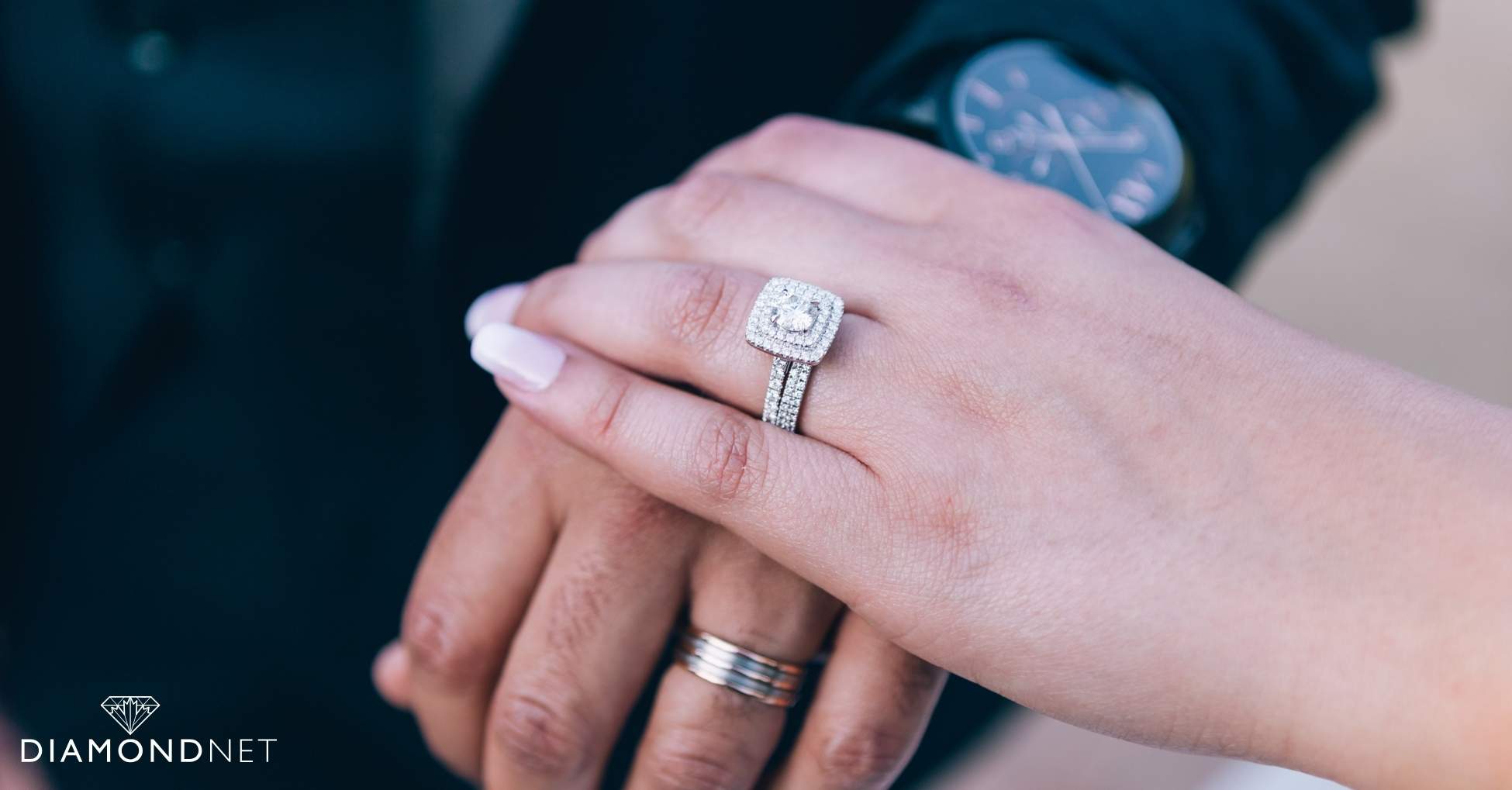
Why are there two rings for marriage?
The tradition of wearing both an engagement ring and a wedding ring has roots in ancient history. The engagement ring symbolized a promise or intent to marry, while the wedding ring represented the official union of marriage. Over time, these two rings evolved into essential symbols of love and commitment, each serving a distinct purpose in the marriage journey.
Conclusion
Understanding the differences between wedding and engagement rings is key to making the right choice for your special day. Whether you prefer a traditional set or a modern design, these rings are timeless symbols of love and commitment.
Ready to find the perfect rings? Explore our curated collection of engagement and wedding rings. Our expert team is here to help you select pieces that beautifully symbolize your love story.
